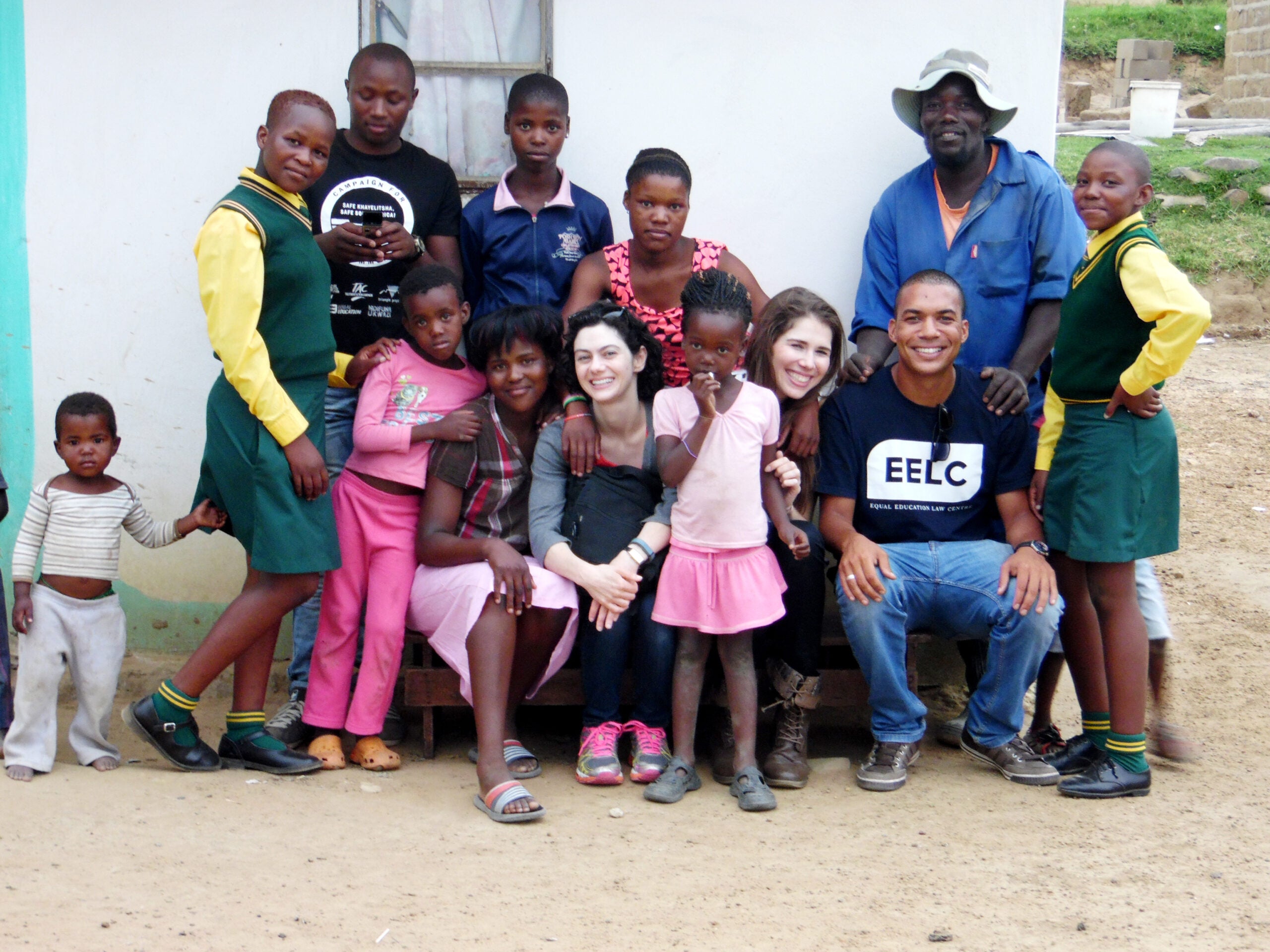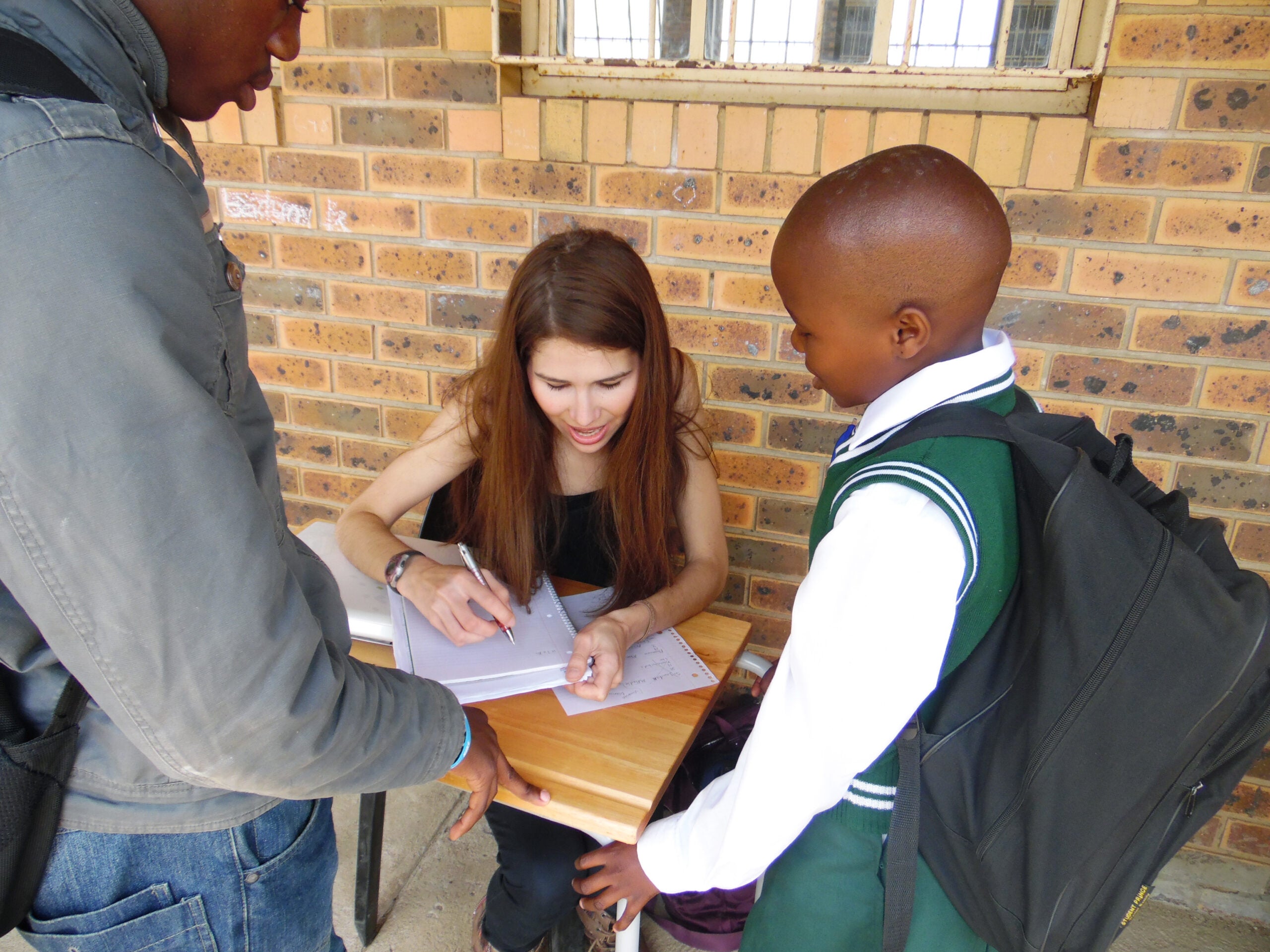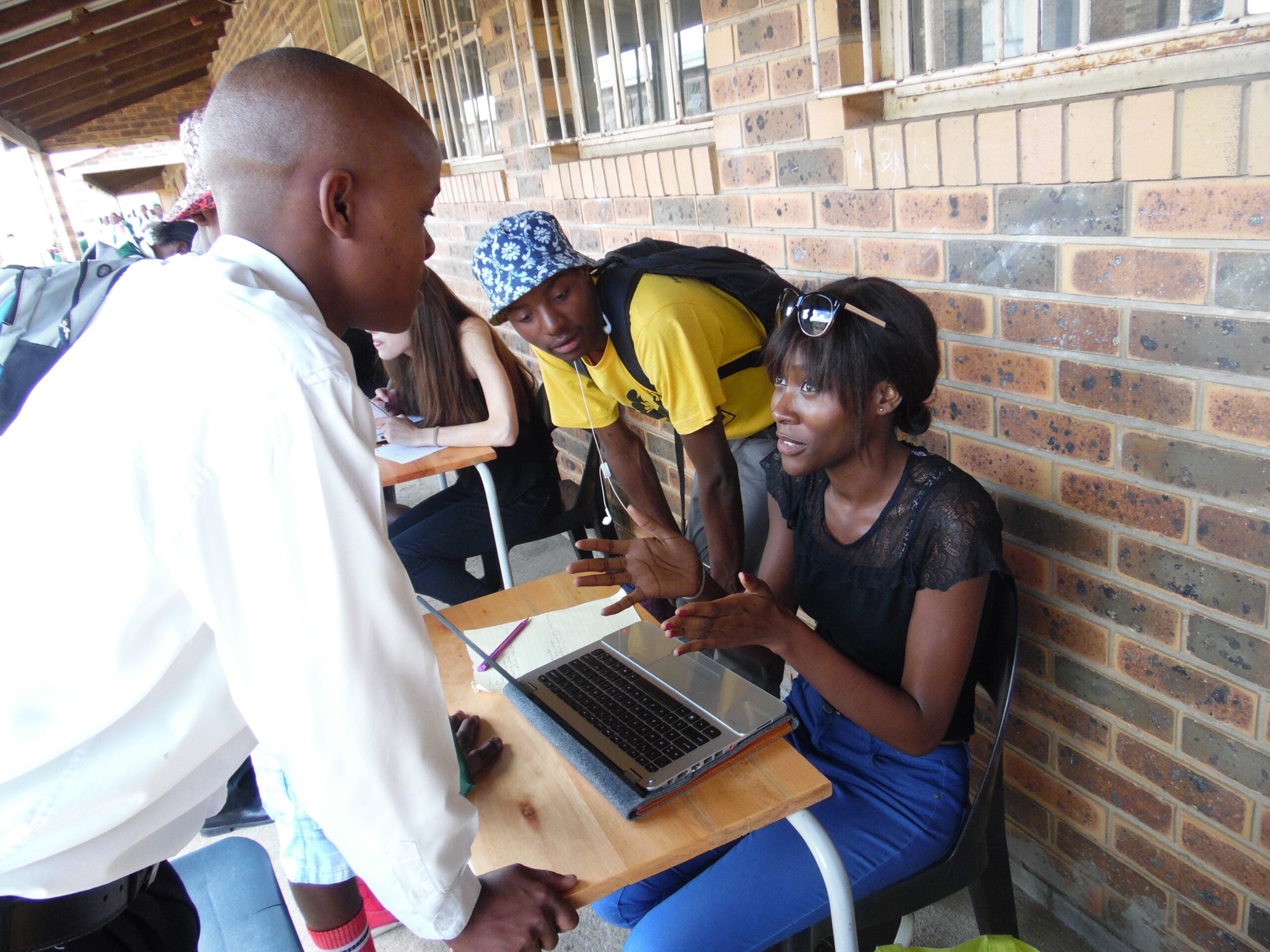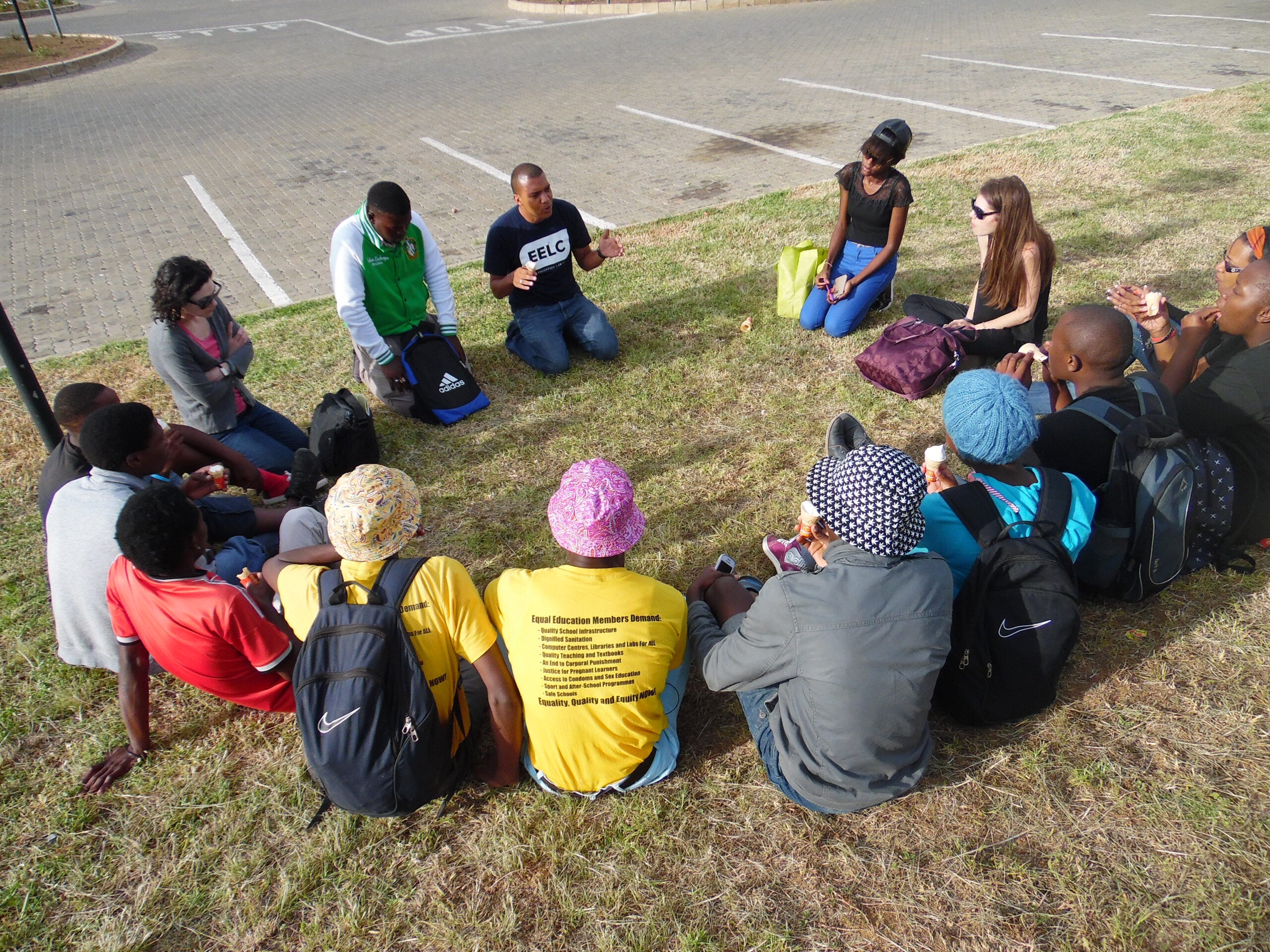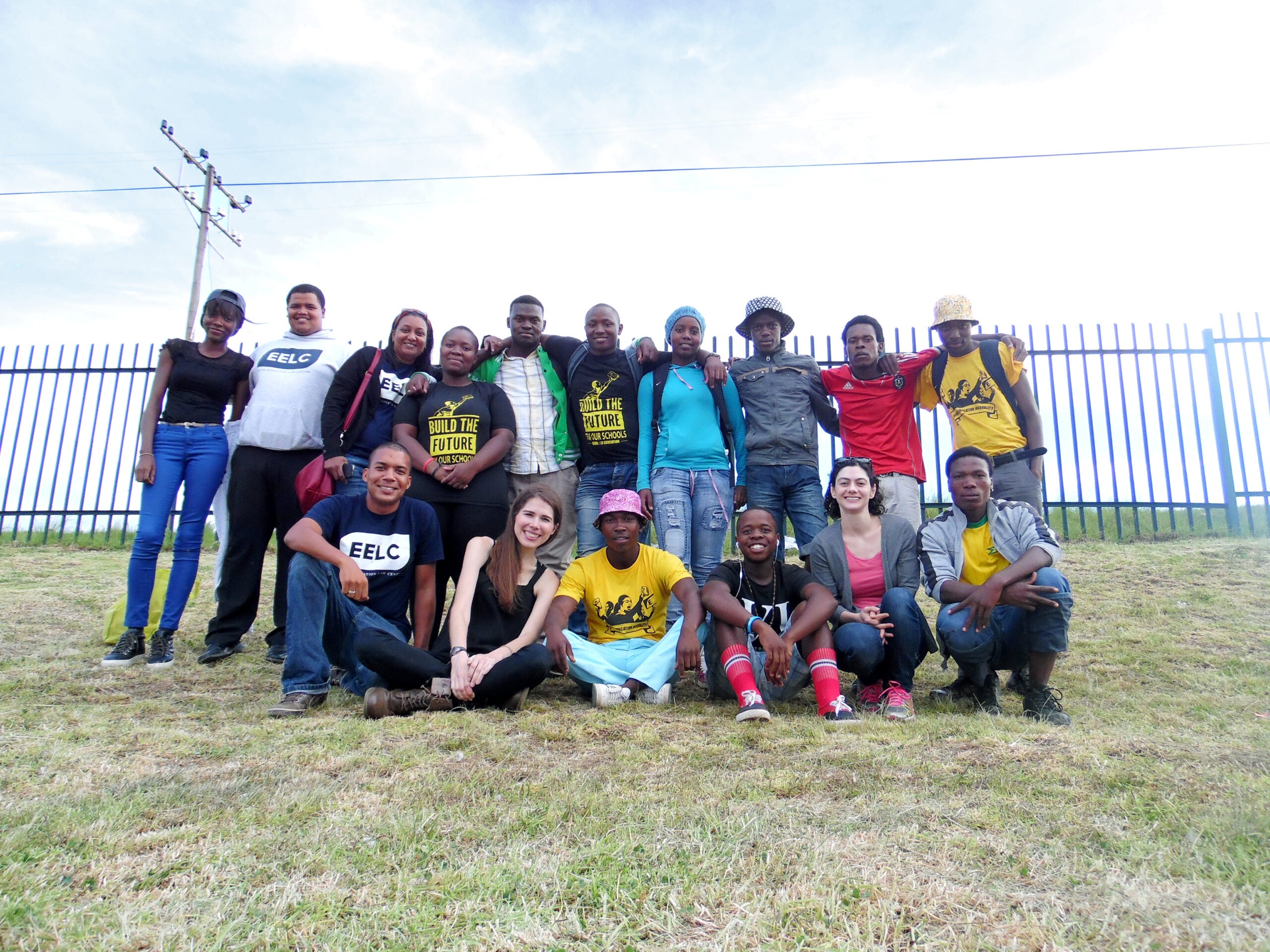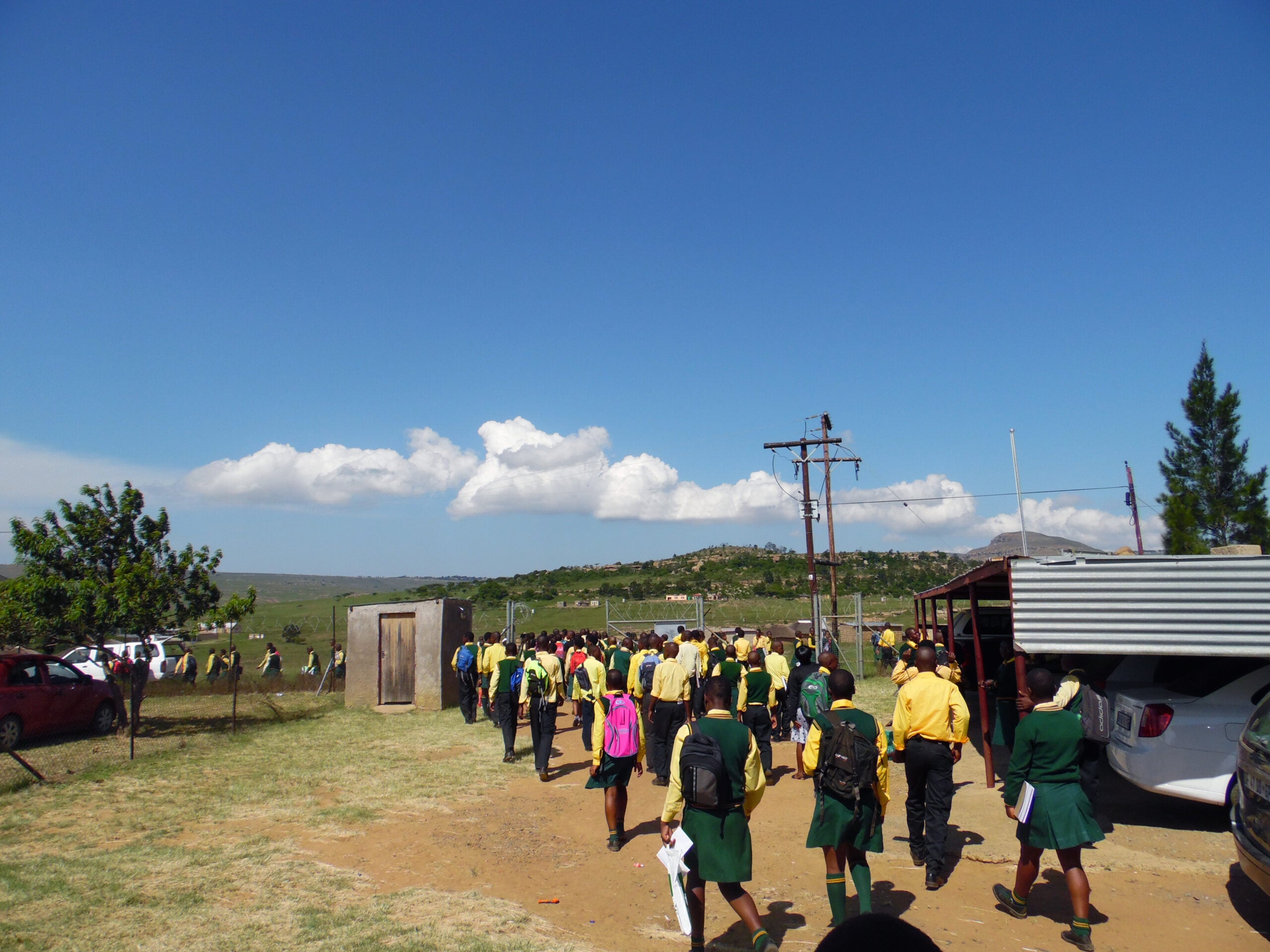In January 2015, a team from Harvard Law School’s International Human Rights Clinic (IHRC) travelled to Nqutu, KwaZulu-Natal, South Africa, to address the challenges facing students who must travel long distances – often in extremely dangerous conditions – to access their education.
Katie King ’16 has been working with the IHRC since last September on issues related to the right to education in South Africa. She spent her 1L summer interning at Equal Education Law Centre in Cape Town, South Africa. David Victorson ’16, a student in the International Human Rights Clinic, is also working on education-related issues in South Africa, in partnership with Equal Education Law Centre. In January, a clinical team visited Nqutu, a small, rural area in eastern South Africa, to document transport-related issues which result in students having to walk 10 miles each way to attend school. In blog posts on the IHRC website, King and Victorson wrote about these issues.
Student Transport Vital to Unlocking the Promise of Education in South Africa
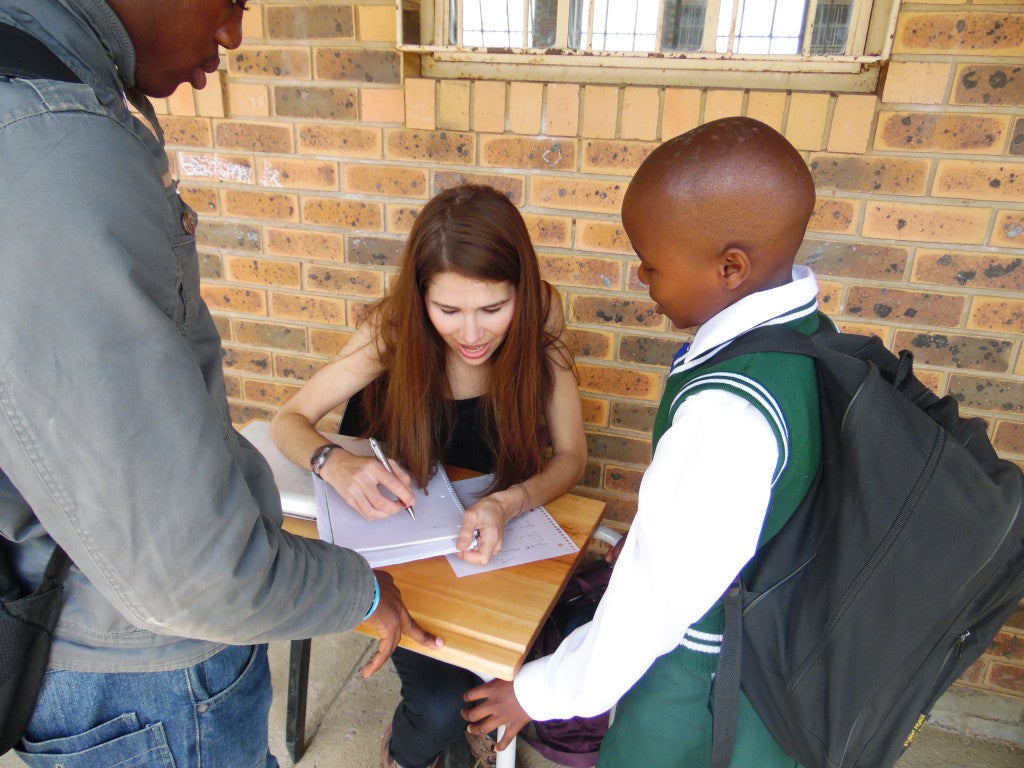
Katie King ’16
I’ve always loved school. Starting from a young age, I even loved the journey to get there. It was time spent with my siblings—an opportunity to tease each other and a chance to get a taste of what felt like the grown-up responsibility of walking alone.
The students in Nqutu, a small, rural area in eastern South Africa, are often just as excited as I was about school. However, as I heard during a trip there this past January with the International Human Rights Clinic, the morning starts for many of them at 4 or 5 a.m., when they wake to fetch water, let out their family’s cows, and help their younger siblings get ready. They then set off on a walk that often exceeds 10 miles.
They tease each other and gossip as I once did, doing their best to protect their uniforms and textbooks from the dirt and weather. But, as the students told us, by the time they arrive at school two hours later, their energy has worn off—and they are fully aware, as they do their best to pay attention in class, that they will have to repeat the journey all over again at the end of the day.
Factor in the additional risks of robbery, rape, snakebites, and treacherous river crossings, and it’s difficult for me to imagine that my five-year-old self would ever have been able to make it to school, let alone focus in class or have the time and energy to complete my homework, in similar conditions. I arrived well-rested and ready to learn. Can the same be said of Nqutu’s students?
Since 2009, the South African government has dragged its heels on finalizing a national scholar transport policy that would address the education system’s many transport-related problems. This is no small matter. As a result of this failure to act, the government is not fulfilling a fundamental right in South Africa’s constitution: the right to a basic education.
Our partners, Equal Education and Equal Education Law Centre, have been campaigning for a range of improvements in the educational system, taking on everything from schools without water and electricity to access to textbooks. In 2014, their student-powered movement shifted its focus to another critical piece of the puzzle: safe, affordable, and reliable school transport.
Not only has the national government failed to fix the problems it itself acknowledged in the draft national scholar transport policy, but the KwaZulu-Natal government has ignored the legal responsibilities it previously set for itself. Provincial policy requires KwaZulu-Natal to provide transportation subsidies to learners who walk more than 3 kilometers to school—a distance easily exceeded by dozens of students we talked to in our short time in Nqutu. None of the students we spoke with were receiving this assistance.
Principals told us they had submitted applications to the provincial government and never heard anything back. Determined to make sure children receive an education, some adults who live closer to school have opened their homes to students from more remote villages. Others drive trucks with more than 20 students packed into the back.
These stop-gap solutions are unsustainable; the government has the responsibility to act. Without a safe, reliable way to get to school, students’ ability to learn is compromised, and education’s promise of a better, more equitable future goes unfulfilled.
The solution may have to be multi-faceted. As we learned on our visit, though many of the difficulties students face are common, there are also different obstacles from school to school; one school may simply need a bus, while another may have learners who are so dispersed that school boarding facilities are the best response. Still, such complexities are not sufficient reason for continuing to stall—especially not when South Africa’s students, in the face of so many challenges, continue to embark upon their long walk to education every day.
What’s So Bad About a 10-Mile Walk to School?
David Victorson ’16
A few weeks ago the Harvard Human Rights Program tweeted about the fact that many students in rural South Africa have to walk more than 20km each day to get to and from school. They cross rugged mountains and flooded rivers. They navigate dangerous highways and treacherous weather. They face physical injury and emotional harm.
Surprisingly, shortly after we posted our tweet, a small number of Twitter users pushed back. One accused us of ignoring how lucky these students are to even be at school, implying that the difficulties of getting there are inconsequential. Another responded that if “it doesn’t kill you it makes you strong.” But as those paying attention to news reports over the past month know, a poor learner transport system has, in fact, already led to the death and injury of multiple children this year. And on our recent trip to Nqutu, KwaZulu-Natal, it didn’t take long to find students who have personal experience with the risks of robbery, rape, kidnapping, and even the death of friends – all created by the long journey to school.
How can this be inconsequential? How does this make anybody stronger?

Faced with such a difficult journey to school, many affected students drop out before completing Grade 12. During our trip, we heard from those who have continued attending school that they arrive exhausted, hungry, and have difficulty focusing in class. When they get home late at night, they may have responsibilities such as caring for livestock, fetching water, and helping to bathe siblings, nieces, and nephews before they can study. Some students go to bed at 11:00 pm, only to rise at 4:00 am and start their journey again.
Because of the many hours lost traveling to and from school, these students are forced to fit a full 24-hour day into something much less. Many struggle to do so by sacrificing homework and sleep, which has long-term consequences on their ability to stay healthy, to concentrate and to learn, and ultimately, to reach their full potential as adults.
Meanwhile, South Africa’s unemployment rate currently hovers around 25%. Among the youth labor force, this numbers jumps to over 33%. Nearly one-third of those aged 15 to 24 are not in employment, education, or training. They are detached from the labor force with seemingly no way to better their situation.
The consequences for South African society stretch far beyond these unemployed individuals.The high unemployment rate hinders the country’s economy, and the large population living in poverty burdens the national budget. The lack of an adequate learner transport system and the current unemployment rate are naturally linked, and neither should be met with indifference.
The South African Constitution provides that everyone has the right to an education, which the state must make available and accessible. In 2009, the Department of Transport took the important first step of drafting a National Scholar Transport Policy, though it has been stalled by years of opposition and political delay. Nearly six years later, the policy is still not active. South Africa can take an important step towards providing these children with an array of new opportunities for their education and their future by adopting and implementing the national scholar transport policy.
A strong and effective transport policy means students across South Africa will arrive at school better able to concentrate and prepared to learn. It means they won’t have to choose between helping their families at home and finding time to study. Rather than be constrained by their education, learners can be empowered by it. They can work in law, business, or science. They can become teachers, artists, or public servants.
And while improving the lives of rural South African youth may be difficult, without access to education, it would remain impossible. Instead of resisting change simply because we persisted without it, we should welcome the fact that we have the ability to provide more today than we did yesterday. We should embrace and cherish the possibility of progress. Wouldn’t that make these students stronger?
These posts were originally published on the HLS Human Rights Program blog.

